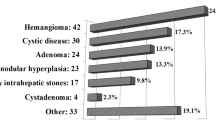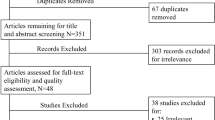Abstract
Nowadays, the respective approach to hepatic resections (for malignant or benign liver lesions) is oriented toward minimal parenchymal resection. This surgical behavior is sustained by several observations that surgical margin width is not correlated with recurrence of malignancies. Parenchymal-sparing resection reduces morbidity without changing long-term results and allows the possibility of re-do liver resection in case of recurrence. Minimally invasive liver surgery (MILS) is performed worldwide and is considered a standard of care for many surgical procedures. MILS is associated with less blood loss, less analgesic requirements, and shorter length of hospital with a better quality of life. One of the more frequent criticisms to MILS is that it represents a more challenging approach for anatomical segmentectomies and that in most cases a non-anatomical resection could be performed with thinner resection margins compared with open surgery. But even in the presence of reduced surgical margins, oncological results in the short- and long-term follow-up seem to be the same such as open surgery. The purpose of this review is to try to understand whether chasing at any cost laparoscopic anatomical segmentectomies is still necessary whereas non-anatomical resections, with a parenchymal-sparing behavior, are feasible and overall recommended also in a laparoscopic approach. The message coming from this review is that MILS is opening more and more new frontiers that are still need to be supported by further experience.
Similar content being viewed by others
References
Buell JF, Cherqui D, Geller DA, O’Rourke N, Iannitti D, Dagher I, Koffron AJ, Thomas M, Gayet B, Han HS, Wakabayashi G, Belli G, Kaneko H, Ker CG, Scatton O, Laurent A, Abdalla EK, Chaudhury P, Dutson E, Gamblin C, D’Angelica M, Nagorney D, Testa G, Labow D, Manas D, Poon RT, Nelson H, Martin R, Clary B, Pinson WC, Martinie J, Vauthey JN, Goldstein R, Roayaie S, Barlet D, Espat J, Abecassis M, Rees M, Fong Y, McMasters KM, Broelsch C, Busuttil R, Belghiti J, Strasberg S, Chari RS, World Consensus Conference on Laparoscopic Surgery (2009) The international position on laparoscopic liver surgery: The Louisville Statement, 2008. Ann Surg 250:825–830
Nguyen KT, Gamblin TC, Geller DA (2009) World review of laparoscopic liver resection—2,804 patients. Ann Surg 250:831–841
Abu Hilal M, Di Fabio F, Abu Salameh M, Pearce NW (2012) Oncological efficiency analysis of laparoscopic liver resection for primary and metastatic cancer: a single-center UK experience. Arch Surg 147:42–48
Giuliani A, Migliaccio C, Ceriello A, Aragiusto G, La Manna G, Calise F (2014) Laparoscopic vs. open surgery for treating benign liver lesions: assessing quality of life in the first year after surgery. Updates Surg 66:127–133
Giuliani A, Migliaccio C, Surfaro G, Ceriello A, Defez M (2012) Short-and long-term follow-up. In: Calise F, Casciola L (eds) Minimally, surgery of the liver. Springer, Milan, pp 167–173
Aldrighetti L, Cipriani F, Ratti F, Casciola L, Calise F (2012) The Italian experience in minimally invasive surgery of the liver: a national survey. In: Calise F, Casciola L (eds) Minimally, surgery of the liver. Springer, Milan, pp 295–312
Postriganova N, Kazaryan AM, Røsok BI, Fretland Å, Barkhatov L, Edwin B (2014) Margin status after laparoscopic resection of colorectal liver metastases: does a narrow resection margin have an influence on survival and local recurrence? HPB (Oxford) 16:822–829
Nguyen KT, Laurent A, Dagher I, Geller DA, Steel J, Thomas MT, Marvin M, Ravindra KV, Mejia A, Lainas P, Franco D, Cherqui D, Buell JF, Gamblin TC (2009) Minimally invasive liver resections for metastatic colorectal cancer. A multi-institutional, international report of safety, feasibility and early outcome. Ann Surg 250:842–848
Okamura Y, Ito T, Sugiura T, Mori K, Uesaka K (2014) Anatomic versus nonanatomic hepatectomy for a solitary hepatocellular carcinoma: a case-controlled study with propensity score matching. J Gastrointes Surg 18:1994–2002
Marubashi S, Gotoh K, Akita H, Takahashi H, Ito Y, Yano M, Ishikawa O, Sakon M (2015) Anatomical versus non-anatomical resection for hepatocellular carcinoma. Br J Surg 102:776–784
Le foie Coinaud C (1957) études anatomiques et chirurgicales. Masson, Paris
Iwamoto S, Sanefuji H, Okuda K (2003) Angiographic subsegmentectomy for the treatment of patients with small hepatocellular carcinoma. Cancer 97(4):1051–1056
Tanaka K, Shimada H, Matsumoto C et al (2008) Anatomic versus limited non-anatomic resection for solitary hepatocellular carcinoma. Surgery 143(5):607–615
Torzilli G, Procopio F, Cimino M et al (2010) Anatomical segmental and subsegmental resection of the liver for hepatocellular carcinoma: a new approach by means of ultrasound-guided vessel compression. Ann Surg 251:229–235
Yoshida H, Katayose Y, Rikiyama T, Motoi F, Onogawa T, Egawa S, Unno M (2012) Segmentectomy of the liver. J Hepatobiliary Pancreat Sci 19:67–71
Ishizawa T, Zuker NB, Kokudo N, Gayet B (2012) Positive and negative staining of hepatic segments by use of fluorescent imaging techniques during laparoscopic hepatectomy. Arch Surg 147:393–394
Ishizawa T, Gumbs AA, Kokudo N, Gayet B (2012) Laparoscopic segmentectomy of the liver: from segment I to VIII. Ann Surg 256:959–964
Kim YK, Han HS, Yoon YS, Cho JY, Lee W (2015) Total anatomical laparoscopic liver resection of segment 4 (s4), extended s4, and subsegments s4a and s4b for hepatocellular carcinoma. J Laparoendosc Adv Surg Tech 25:375–379
Goumard C, Farges O, Laurent A, Cherqui D, Soubrane O, Gayet B, Pessaux P, Pruvot FR, Scatton O (2015) An update on laparoscopic liver resection: The French Hepato-Bilio-Pancreatic Surgery Association statement. J Visc Surg 152:107–112
Cai X, Li Z, Zhang Y, Yu H, Liang X, Jin R, Luo F (2014) Laparoscopic liver resection and the learning curve: a 14-year, single-center experience. Surg Endosc 28:1334–1341
Viganò L, Laurent A, Tayar C, Tomatis M, Ponti A, Cherqui D (2009) The learning curve in laparoscopic liver resection: improved feasibility and reproducibility. Ann Surg 250:772–782
Viganò L, Tayar C, Laurent A, Cherqui D (2009) Laparoscopic liver resection: a systematic review. J Hepatobiliary Pancreat Surg 16:410–421
Wakabayashi G, Cherqui D, Geller DA, Buell JF, Kaneko H, Han HS, Asbun H, OʼRourke N, Tanabe M, Koffron AJ, Tsung A, Soubrane O, Machado MA, Gayet B, Troisi RI, Pessaux P, Van Dam RM, Scatton O, Abu Hilal M, Belli G, Kwon CH, Edwin B, Choi GH, Aldrighetti LA, Cai X, Cleary S, Chen KH, Schön MR, Sugioka A, Tang CN, Herman P, Pekolj J, Chen XP, Dagher I, Jarnagin W, Yamamoto M, Strong R, Jagannath P, Lo CM, Clavien PA, Kokudo N, Barkun J, Strasberg SM (2015) Recommendations for laparoscopic liver resection: a report from the second international consensus conference held in Morioka. Ann Surg 2616:19–29
Pawlik TM, Scoggins CS, Zorzi D et al (2005) Effect of surgical margin status on survival and site of recurrence after hepatic resection for colorectal metastases. Ann Surg 241(5):715–724
Muratore A, Ribero D, Zimmitti G et al (2010) Resection margin and recurrence-free survival after liver resection of colorectal metastases. Ann Surg Oncol 17(5):1324–1329
Torzilli G, Montorsi M, Del Fabbro D et al (2006) Ultrasonographically guided surgical approach to liver tumours involving the hepatic veins close to the caval confluence. Br J Surg 93:1238–1246
Torzilli G, Botea F, Donadon M et al (2010) Minimesohepatectomy for colorectal liver metastasis invading the middle hepatic vein at the hepatocaval confluence. Ann Surg Oncol 17:483
Dahiya D, Wu TJ, Lee CF et al (2010) Minor versus major hepatic resection for small hepatocellular carcinoma (HCC) in cirrhotic patients: a 20-year experience. Surgery 147:676–685
Matsui Y, Terakawa N, Satoi S et al (2007) Postoperative outcomes in patients with hepatocellular carcinomas resected with exposure of the tumor surface: clinical role of the no-margin resection. Arch Surg 142:596–602
Torzilli G, Donadon M, Cimino M et al (2009) Systematic subsegmentectomy by ultrasoundguided finger compression for hepatocellular carcinoma in cirrhosis. Ann Surg Oncol 16(7):1843
Hirokawa F, Kubo S, Nagano H, Nakai T, Kaibori M, Hayashi M, Takemura S, Wada H, Nakata Y, Matsui K, Ishizaki M, Uchiyama K (2015) Do patients with small solitary hepatocellular carcinomas without macroscopically vascular invasion require anatomic resection? Propensity score analysis. Surgery 157:27–36
Rao A, Rao G, Ahmed I (2012) Laparoscopic vs. open liver resection for malignant liver disease. A systematic review. Surgeon 10:194–201
Kaneko H, Otsuka Y, Takagi S et al (2004) Hepatic resection using stapling devices. Am J Surg 187:280–284
Gumbs AA, Gayet B, Gagner M (2008) Laparoscopic liver resection: when to use the laparoscopic stapler device. HPB (Oxford) 10(4):296–303
Abu Hilal MA, McPhail MJW, Zeidan B et al (2008) Laparoscopic vs. open left lateral sectionectomy: a comparative study. Eur J Surg Oncol 34:1285–1288
Aldrighetti L, Pulitano C, Catena M et al (2008) A prospective evaluation of laparoscopic vs. open left lateral sectionectomy. J Gastrointest Surg 12:457–462
McPhail MJ, Scibelli T, Abdelaziz M et al (2009) Laparoscopic vs. open left lateral hepatectomy. Expert Rev Gastroenterol Hepatol 3:345–351
Kazaryan AM, Rosok BI, Marangos IP et al (2011) Comparative evaluation of laparoscopic liver resection for posterosuperior and anterolateral segments. Surg Endosc 25(12):3881–3889
Calise F (2012) Segmentectomies (Chapters 26-34): A Foreword. In: Calise F, Casciola L (eds) Minimally, surgery of the liver. Springer, Milan, pp 187–190
Author information
Authors and Affiliations
Corresponding author
Ethics declarations
Conflict of interest
The authors declare that they have no conflict of interest.
Ethical Standard
All procedure performed in this study were in accordance with the ethical standards of the institutional and/or national research committee and with the 1964 Helsinki declaration and its later amendments or comparable ethical standards.
Research involving human participants and/or animals
No research on humans nor animals was made.
Informed consent
Informed consent is not required for review type of articles.
Rights and permissions
About this article
Cite this article
Calise, F., Giuliani, A., Sodano, L. et al. Segmentectomy: is minimally invasive surgery going to change a liver dogma?. Updates Surg 67, 111–115 (2015). https://doi.org/10.1007/s13304-015-0318-z
Received:
Accepted:
Published:
Issue Date:
DOI: https://doi.org/10.1007/s13304-015-0318-z




